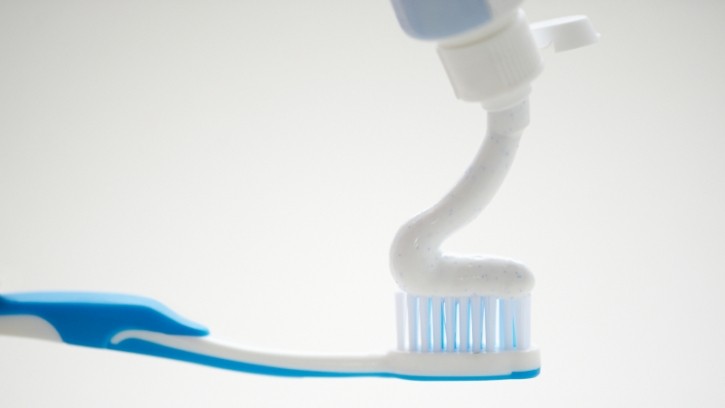China’s new toothpaste regulations raise barrier, increase costs and time to market – analyst

This comes after China State Administration for Market Regulation (SAMR)’s issuance of the finalised Administrative Measures on Toothpaste in March.
Currently, toothpastes in China are regulated under a straightforward management scheme, where compliance with national and industry standards allows entry into the market.
With the updated measures, toothpaste products will require notification, testing, safety assessment, efficacy evaluation, and new ingredients application.
Specifically, only toothpaste whose notification is completed will be permitted for sale and import. Domestic products must be notified to provincial-level Medical Products Administration (MPA), and imported products to National Medical Products Administration (NMPA).
Based on the regulations for new cosmetic ingredients (NCI), NMPA will establish a similar approval and supervision system for new toothpaste ingredients, which refer to natural or artificial ingredients used in toothpaste for the first time in China.
These ingredients must comply with the regulations for NCI, and those containing preservative or colouring need to be registered with NMPA. Other new ingredients are subject to notification.
“Toothpaste is a daily product for maintaining oral health, so the Chinese government has been dedicated to enhancing supervision and management of this category while continuously improving relevant policies.
“The objective is to combat false advertising in the toothpaste industry, meet the evolving market demands, and eliminate non-compliant companies. The new regulatory approach for toothpaste aligns it with that of general cosmetics, aiming to standardise the development of the sector, and progressively be consonant with international standards,” said Hedy He, Cosmetic Regulatory Analyst at Chemlinked.
According to He, the new regulatory requirements have had a significant impact on toothpaste companies, as the higher barrier to entry has resulted in a longer time needed to bring products to market and increased costs.
“For instance, the notification process may extend the timeline for development and launch of new products by one to two years on average. The toothpaste industry is expected to undergo a transition period spanning several years.
“Companies planning to enter the market will need a thorough understanding of the regulations, and overcome various challenges such as optimising product lines and gathering the necessary information for notification. It is crucial for companies to act swiftly, sort out processes, and allocate resources to meet the new requirements.”
Streamlining notification requirements
Imposing the same notification requirements on both new and existing products could hinder the implementation of the measures and cause unnecessary waste of resources.
To address this, NMPA has introduced simplified notification document requirements for toothpastes that are in the market before December 1, 2023, have no incidents related to quality and safety, and possess comprehensive evidence of history of safe usage.
For example, if a product label only has formatting issues, companies should amend them in accordance with the regulations before July 1, 2024.
This means that packaging labels already in use can continue until that date.
“During the transition period, companies can gradually utilise their inventory of packaging materials. This not only cuts monetary losses, but also minimises wastage. If the packaging does not fulfil the new requirements, immediate rectification is recommended.
“Once the simplified notification process is completed, existing products can continue to be sold during this period. This relieves the pressure on companies with a large number of stocks, allowing them to comply with the new regulations more efficiently and conveniently.”
In addition, He said that companies should get a good grasp of the notification procedures and requirements, review their existing product line-up, and promptly complete the simplified notification documents for products already in the market.
Additional requirements for children’s toothpaste
The new measures also cover children’s toothpaste, which is defined as “toothpaste product claimed to be suitable for children aged 12 years and below”.
These products are limited to claiming efficacy in cleaning and preventing caries.
Furthermore, children’s toothpastes must clearly display the designated “Little Golden Shield” logo on the packaging, while the text on the logo should state “儿童牙膏 (children’s toothpaste)” instead of “儿童化妆品 (children’s cosmetics)”.
Appropriate cautionary statements, such as “Use under adult supervision”, “Not edible”, and “Beware of swallowing”, should also be included on the visible side of the packaging.
![Cosmetics NZ says the cosmetics sector can expect minimal differences between New Zealand’s and the EU's PFAS bans. [Getty Images]](/var/wrbm_gb_food_pharma/storage/images/_aliases/wrbm_medium/publications/cosmetics/cosmeticsdesign-asia.com/headlines/regulation-safety/nz-bans-pfas-industry-can-expect-minimal-differences-with-eu-forever-chemicals-ban-cosmetics-nz/17140892-1-eng-GB/NZ-bans-PFAS-Industry-can-expect-minimal-differences-with-EU-forever-chemicals-ban-Cosmetics-NZ.jpg)
![The rising demand for kid-friendly makeup is fuelled by the innate need for self-expression among Gen Alpha children and their millennial parents. [Evereden]](/var/wrbm_gb_food_pharma/storage/images/_aliases/wrbm_medium/publications/cosmetics/cosmeticsdesign-asia.com/article/2023/10/18/makeup-for-kids-need-for-self-expression-boosting-interest-in-kid-friendly-makeup/16823547-1-eng-GB/Makeup-for-kids-Need-for-self-expression-boosting-interest-in-kid-friendly-makeup.jpg)

![SENSAI is set to unveil a flagship store in Shanghai in Q4. [SENSAI]](/var/wrbm_gb_food_pharma/storage/images/_aliases/wrbm_medium/publications/cosmetics/cosmeticsdesign-asia.com/article/2023/10/10/sensai-outlines-asia-expansion-plans-starting-shanghai-flagship-in-q4/16792511-1-eng-GB/SENSAI-outlines-Asia-expansion-plans-starting-Shanghai-flagship-in-Q4.jpg)



![[Getty Images]](/var/wrbm_gb_food_pharma/storage/images/_aliases/wrbm_tiny/publications/cosmetics/cosmeticsdesign-asia.com/china/china-focus-latest-developments-in-china-s-booming-beauty-market22/17370102-1-eng-GB/China-focus-Latest-developments-in-China-s-booming-beauty-market.jpg)
![YSL's LoveShine launch has sparked a demand surge in Japan. [YSL]](/var/wrbm_gb_food_pharma/storage/images/_aliases/wrbm_tiny/publications/cosmetics/cosmeticsdesign-asia.com/article/2024/04/24/ysl-loveshine-launch-propels-lip-gloss-sales-to-record-highs-in-japan-since-2020/17372064-1-eng-GB/YSL-LoveShine-launch-propels-lip-gloss-sales-to-record-highs-in-Japan-since-2020.jpg)
![There is significant scope for innovation and new launches in the hair repair sector, especially in soaring markets such as China. [Getty Images]](/var/wrbm_gb_food_pharma/storage/images/_aliases/wrbm_tiny/publications/cosmetics/cosmeticsdesign-asia.com/article/2024/04/24/croda-zeroes-in-on-hair-repair-solutions-as-damage-hair-concerns-surge-in-markets-like-china/17362731-1-eng-GB/Croda-zeroes-in-on-hair-repair-solutions-as-damage-hair-concerns-surge-in-markets-like-China.jpg)



![Lubrizol has extended its partnership with C-beauty major PROYA. [PROYA]](/var/wrbm_gb_food_pharma/storage/images/_aliases/wrbm_tiny/publications/cosmetics/cosmeticsdesign-asia.com/headlines/brand-innovation/lubrizol-bullish-on-potential-of-c-beauty-growth-potential/17362515-1-eng-GB/Lubrizol-bullish-on-potential-of-C-beauty-growth-potential.jpg)
